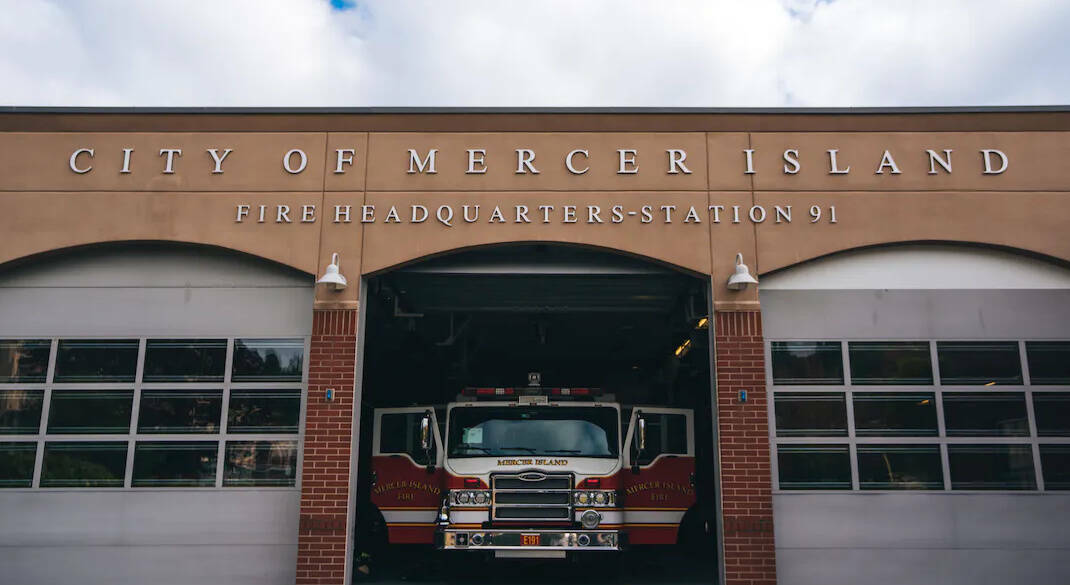With the city of Mercer Island’s management analyst entering the picture, the city council received a preliminary cost analysis of a pair of regional fire services proposals at its June 6 special hybrid meeting.
The city’s potential adoption of a regional fire services model was last discussed at council’s May 2 meeting when proposals from the Bellevue Fire Department and Eastside Fire & Rescue (EF&R) were placed into the spotlight.
Since that meeting, City Manager Jessi Bon has met four times with the ad-hoc committee of Mayor Salim Nice and councilmembers Lisa Anderl and Craig Reynolds to review and evaluate the documents.
On June 6, management analyst Robbie Cunningham Adams kicked off the initial proposals discussion by rolling through the staff-prepared estimated costs for Bellevue and EF&R services compared to the estimated costs for a stand-alone Mercer Island Fire Department (MIFD) in 2024.
Bon said that following a discussion with council at the meeting, “I will be working on a recommendation to the city council on the adoption of a regional fire services model and I would bring that back to you at a future meeting.” No date has been solidified for that gathering.
On the MIFD front, estimated total expenses are about $8.5 million and include proposed personnel and operational expenses ($7.4 million), repair and maintenance of fire trucks and vehicles and aid cars if the EF&R interlocal agreement remains intact ($108,200), additional cost for a chief and deputy chief ($571,905) and more.
Bellevue submitted its analysis in 2023 dollars, so Cunningham Adams arranged to use a 4% cost escalation to arrive at an estimated total expenses of around $7.9 million. Proposed personnel and operational expenses sit at $7.1 million and the chart also includes a 5% administrative fee of $355,454.
Over at EF&R, it unveiled an estimated total expenses amount of approximately $8.2 million, which includes proposed personnel and operational expenses of $7.1 million, a 10% administrative fee of $715,886, an equipment replacement fund of $114,000, a large fire apparatus replacement fund of $168,275 and more.
Bellevue’s one-time transition costs total around $1 million and include training, uniforms, benefit liability and more. At EF&R, its one-time transition costs total of about $1.2 million include a time accrual liability fund and costs to align critical safety equipment.
Bon said that some of the numbers could shift slightly as they delve into copious details on the proposals.
“I’m standing firm (that) our proposals include maintaining our current staffing levels, keeping our fire stations open and that safety will not be compromised. I certainly think if we join a regional services model that all those unique specialities and training that would come to our workforce would be an enhancement and would bring those services directly onto the Island,” added Bon, who thanked Mercer Island’s two partners and their staffs for putting immense effort into their proposals and “doing everything they can to help us.”
Following the issuance of Bon’s March 29 recommendation letter to the community to move toward a regional route, city council authorized and directed Bon at its April 4 meeting to seek proposals, according to a previous Reporter story. Bon announced at that meeting that she believes adopting a regional model “will provide opportunities for a more cohesive, efficient and cost-effective fire service on Mercer Island.”
If the transition occurs, both Island fire stations 91 and 92 would remain open and staffed and residents’ taxes would not be impacted, said Bon in a previous Reporter story, adding that safety remains the city’s top priority.
For more information, visit: https://tinyurl.com/2p96h3nm


